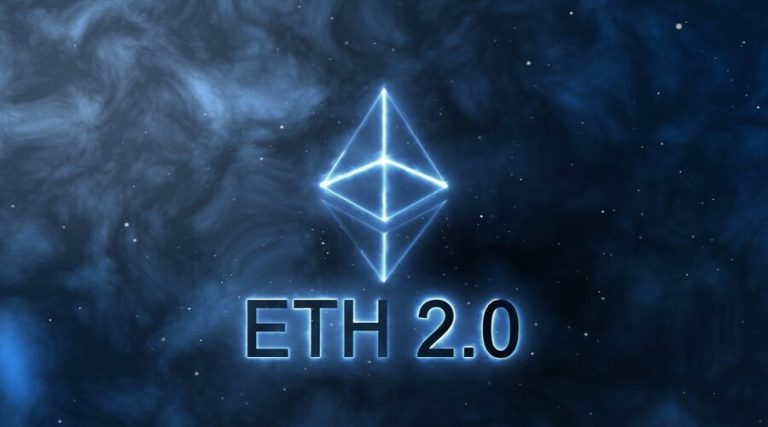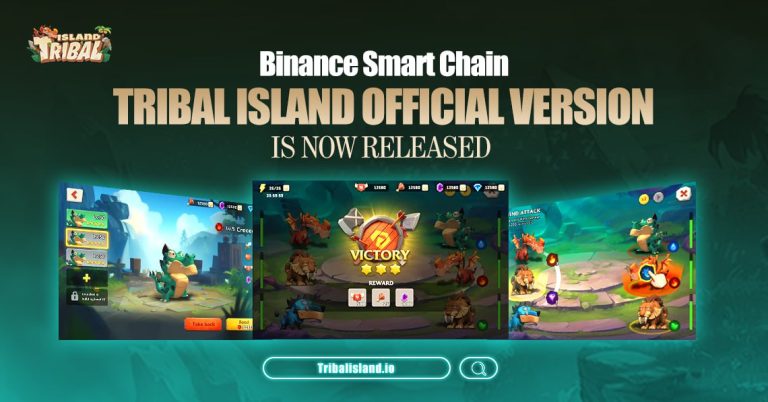
NFT Interoperability through Cross-Chain Bridges
Non-fungible tokens (NFTs) have revolutionized the digital asset landscape, allowing for the ownership and transfer of unique digital items. To unlock their full potential, NFTs need to be interoperable across different blockchain networks. This article explores how cross-chain bridges facilitate NFT interoperability, enabling the seamless transfer of non-fungible tokens.
Introduction
NFTs have gained immense popularity, representing unique digital assets such as artwork, collectibles, virtual real estate, and more. However, NFTs are often confined to specific blockchain networks. NFT interoperability through cross-chain bridges allows these tokens to transcend network boundaries, enabling greater liquidity, collaboration, and user experiences.
Understanding NFT Interoperability
- NFTs and Unique Assets: NFTs are digital tokens that represent ownership of unique assets or digital content, ensuring their scarcity and uniqueness on the blockchain.
- Interoperability: NFT interoperability refers to the ability of NFTs to move seamlessly between different blockchain networks, allowing for cross-chain transfers and interactions.
Benefits of NFT Interoperability through Cross-Chain Bridges
– Increased Liquidity and Market Access
Interoperability through cross-chain bridges expands the liquidity and market access for NFTs. Consider the following advantages:
- Broader Pool of Buyers and Sellers: NFTs can reach a wider audience, attracting buyers and sellers from different blockchain ecosystems, leading to increased trading opportunities and liquidity.
- Multi-Platform Compatibility: Interoperable NFTs can be listed and traded on various NFT marketplaces and platforms, regardless of the underlying blockchain network, making them accessible to a larger user base.
– Expanded Audience and Collaboration Opportunities
Cross-chain interoperability enables collaboration and interaction among NFT communities across different blockchain networks. Consider the following benefits:
- Collaborative Projects: Artists, creators, and developers from different blockchain communities can collaborate on NFT projects, combining their unique talents and expanding the creative possibilities of NFTs.
- Increased Exposure: NFTs can gain exposure to a broader audience as they traverse multiple blockchain networks, increasing their visibility and attracting new collectors and enthusiasts.
– Cross-Platform NFT Experiences

NFT interoperability through cross-chain bridges allows for seamless cross-platform experiences. Consider the following advantages:
- Cross-Chain NFT Transfers: NFT owners can transfer their tokens between different blockchain networks, enabling them to engage with different platforms, applications, and virtual worlds while retaining ownership of their NFTs.
- Cross-Chain NFT Usage: Interoperable NFTs can be utilized across various applications and platforms, unlocking new functionalities and experiences that were previously limited to specific blockchain ecosystems.
– Preservation of Authenticity and Ownership
Cross-chain bridges ensure the preservation of authenticity and ownership of NFTs. Consider the following:
- Immutable Ownership: NFTs remain securely stored on their respective blockchain networks, with cross-chain bridges facilitating the transfer of ownership without compromising the integrity of the underlying asset.
- Verification of Authenticity: Cross-chain bridges can provide mechanisms for verifying the authenticity of NFTs across different blockchain networks, enhancing trust and reducing the risk of counterfeit or fraudulent NFTs.
Challenges and Considerations
– Technical Standardization
Achieving NFT interoperability requires technical standardization across different blockchain networks. Consider the following challenges:
- Consistent Metadata Standards: Establishing common metadata standards and protocols for NFT attributes, such as descriptions, images, and provenance, to ensure seamless interpretation and display across multiple platforms.
- Interoperable Smart Contracts: Developing interoperable smart contracts that support the transfer and interaction of NFTs across different blockchain networks while maintaining consistency and compatibility.
– Security and Trustworthiness
Maintaining security and trust is crucial for NFT interoperability. Consider the following considerations:
- Secure Cross-Chain Transfers: Implementing robust security measures in cross-chain bridges to ensure the secure transfer of NFTs, protecting against unauthorized access, tampering, or theft.
- Trust in Intermediaries: Establishing trust in the cross-chain bridge operators and intermediaries involved in the NFT transfer process, ensuring their adherence to security best practices and transparent operations.
– Scalability and Performance
Scaling NFT interoperability across multiple blockchain networks presents challenges. Consider the following aspects:
- Cross-Chain Communication: Optimizing cross-chain communication protocols and infrastructure to maintain high-performance standards, especially as the volume of NFT transfers and interactions increases.
- Transaction Throughput: Ensuring that cross-chain bridges can handle the transactional demands of NFT transfers, maintaining low latency and minimal congestion to provide a smooth user experience.
– User Experience and Adoption
User experience and adoption play a significant role in the success of NFT interoperability. Consider the following factors:
- Seamless User Interfaces: Designing user-friendly interfaces that simplify the process of interacting with cross-chain bridges, making NFT transfers and interactions intuitive and accessible to users with varying technical expertise.
- Education and Awareness: Educating users about NFT interoperability, its benefits, and how to leverage cross-chain bridges to enhance their NFT experiences, fostering broader adoption and participation.
Cross-Chain Bridge Ecosystems and Interconnected Networks
NFT interoperability through cross-chain bridges creates interconnected ecosystems of blockchain networks. Consider the following points:
- Network Interoperability: Cross-chain bridges facilitate seamless communication and interoperability between different blockchain networks, allowing NFTs to be transferred and utilized across multiple chains.
- Network Effects: As more blockchain networks integrate cross-chain bridges, the network effects amplify, attracting more participants and creating a robust ecosystem of interconnected networks.
NFT Fractionalization and Cross-Chain Trading
Cross-chain bridges can enable fractionalization and cross-chain trading of NFTs. Consider the following aspects:
- Fractional Ownership: NFTs can be fractionally divided and traded across multiple blockchain networks, allowing investors to own a fractional share of high-value NFTs and participate in their appreciation.
- Liquidity Pools: Cross-chain bridges can facilitate the creation of liquidity pools for fractionalized NFTs, enabling users to provide liquidity and trade fractions of NFTs on decentralized exchanges.
Cross-Chain NFT Metadata and Standards
Standardizing NFT metadata and attributes across different blockchain networks is crucial for seamless interoperability. Consider the following:
- Metadata Compatibility: Establishing cross-chain metadata standards ensures that NFT attributes, such as descriptions, images, and provenance, can be accurately interpreted and displayed across various platforms and networks.
- Cross-Chain Metadata Bridges: Developing mechanisms or protocols that bridge and synchronize NFT metadata across different chains, maintaining consistency and enabling seamless metadata display.
Governance and Decentralization in NFT Interoperability
Decentralized governance models play a vital role in NFT interoperability. Consider the following:
- Community Governance: Involving the NFT community in decision-making processes regarding cross-chain bridge development, upgrades, and interoperability standards to ensure transparency and inclusivity.
- Decentralized Governance Tokens: Introducing governance tokens that allow NFT holders and participants to actively participate in the governance and evolution of cross-chain bridge ecosystems.
Legal and Intellectual Property Considerations
NFT interoperability raises legal and intellectual property considerations. Consider the following points:
- Cross-Jurisdictional Compliance: NFT interoperability across different blockchain networks requires adherence to various legal frameworks, including intellectual property rights, licensing, and data privacy regulations.
- Smart Contract Audits: Conducting thorough audits of smart contracts powering cross-chain bridges and NFT marketplaces to ensure compliance with legal and regulatory requirements and protect user rights.
Cross-Chain NFT Marketplaces and Aggregation Platforms
Cross-chain bridges enable the creation of cross-chain NFT marketplaces and aggregation platforms. Consider the following:
- Aggregating NFTs: Cross-chain NFT marketplaces and platforms can aggregate NFTs from various blockchain networks, providing users with a consolidated view and access to a wider range of NFTs.
- Cross-Chain Trading: These platforms facilitate cross-chain trading of NFTs, allowing users to buy, sell, and trade NFTs across different blockchain networks, expanding market opportunities and improving liquidity.
Interoperable NFT Gaming and Virtual Worlds
Cross-chain bridges enhance interoperability in the NFT gaming and virtual worlds. Consider the following:
- Cross-Platform Gaming: Interoperable NFTs enable players to use their NFTs seamlessly across different gaming platforms and virtual worlds, enhancing the gaming experience and allowing for unique in-game interactions.
- Interconnected Virtual Worlds: Cross-chain bridges facilitate the transfer of NFTs between virtual worlds, enabling users to carry their virtual assets across different blockchain-based metaverses and virtual reality environments.
Cross-Chain NFT Lending and Collateralization
NFT interoperability opens up possibilities for NFT lending and collateralization across different blockchain networks. Consider the following:
- NFT Collateralized Loans: Users can leverage their NFTs as collateral to obtain loans or access liquidity on cross-chain lending platforms, regardless of the underlying blockchain network of the NFT.
- Cross-Chain NFT Collateral: Lenders can accept NFT collateral from various blockchain networks, broadening the range of accepted assets and increasing the availability of lending options for NFT holders.
Cross-Chain NFT Royalties and Secondary Market Trading
Cross-chain bridges facilitate the tracking and collection of royalties for NFT creators in the secondary market. Consider the following:
- Royalty Collection: Interoperable NFT platforms can automatically enforce royalty payments to NFT creators, ensuring they receive a percentage of the proceeds from secondary market transactions, regardless of the blockchain network on which the NFT is sold.
- Secondary Market Liquidity: Cross-chain NFT trading platforms enhance liquidity in the secondary market, allowing for seamless trading of NFTs between different blockchain networks, increasing exposure for creators and collectors.
Cross-Chain NFT Identity and Certification
Cross-chain bridges enable NFT identity and certification across different blockchain networks. Consider the following:
- Verified NFT Identity: Cross-chain bridges can establish mechanisms to verify the identity and authenticity of NFT creators, ensuring transparency and trust in the NFT ecosystem.
- Certifications and Authenticity Proofs: NFTs can be certified and associated with proofs of authenticity through cross-chain bridges, providing collectors with verified information about the origin, ownership history, and provenance of the NFTs.
By incorporating NFT identity and certification, cross-chain bridges enhance the trustworthiness and value of NFTs, fostering a vibrant and reliable NFT ecosystem.
Conclusion
NFT interoperability through cross-chain bridges revolutionizes the NFT ecosystem by enabling the seamless transfer of non-fungible tokens across different blockchain networks. This interoperability brings benefits such as increased liquidity, expanded collaboration opportunities, cross-platform experiences, and preserved authenticity. However, challenges related to technical standardization, security, scalability, and user experience need to be addressed to fully unlock the potential of NFT interoperability.


